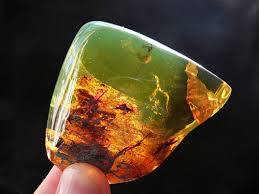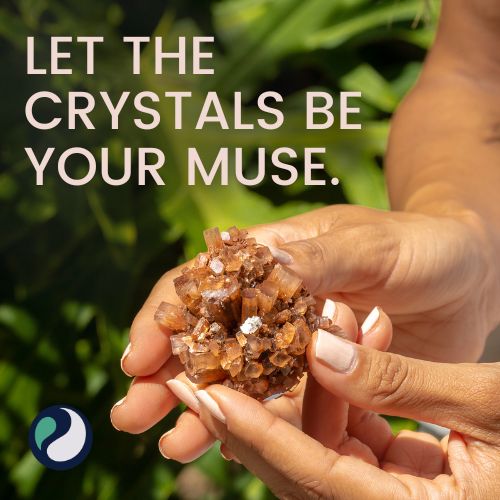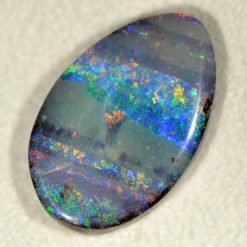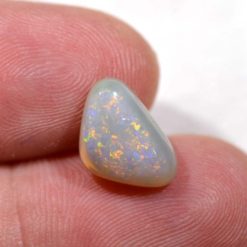No products in the cart.
Gemstone Information
50 Shades Of Sunshine: What Are The Colors of Amber?
What comes to mind when you think of amber? Is it golden hues of honey yellow and cognac orange? If so, you’re likely envisioning a glistening amber gemstone. But did you know that this ancient gem comes in more colors than orange and yellow? If that’s the case, what are the colors of amber?
Not unlike fire, amber illuminates a myriad of colors — and not just warm-toned, either. That’s because amber is in a class of gemstones called organics. An organic gemstone comes from a living organism, like pearls and coral!
Why is this important? Because knowing the structure and composition of this sunshine jewel shapes the different colors of amber.
Keep reading as we shed light on this sunny jewel and illuminate the details that infuse amber with a variety of beautiful shades.
What Is Amber?
Gemstones divide into two classes: minerals and organics. Minerals are gems with crystalline structures that grow in the earth’s surface over millions of years. Examples of minerals include diamonds, sapphires, and emeralds.
Organics, on the other hand, are in a unique class because they grow from living creatures or biological organisms. For example, a pearl is the result of a mollusk secreting a protective layer around an irritant, like a grain of sand.
Amber is unique because it doesn’t come from an animal, but tree resin! Let’s break the growth process down in steps:
- Trees are natural plants grown in forests and woodlands.
- Resin is the byproduct secreted by evergreen shrubs and trees.
- Over time, insects feed on this resin, and it dries out and hardens.
- Inevitably, the trees die and fossilize, and so does its resin.
The result?

A glowing amber gem! The brilliant feature of amber is that they are all unique because the hardening process varies from tree to tree. And that’s why you’ll see a spectrum of amber colors.
That said, most amber gems come from deposits in the Baltics. Have you heard of Baltic amber? If you have, it’s understandable because this is by far the most popular amber color, but it’s not the only one to marvel at, as you’ll soon find out.
Amber Color Meaning
What does amber mean? There are amber-colored eyes, green amber, and Baltic amber, to name a few. But the actual meaning of amber depends on its color. See, vibrant hues in red and orange symbolize boldness and happiness.
Bright red and yellow shades evoke a sense of energy and inspiration. According to color psychology, amber represents confidence and endurance.
Overall, the color amber represents sunshine, warmth, and earthiness. Of course, this largely depends on the actual color, so let’s get right to the different colors of amber!
What Colors Does Amber Come In?
We’ll explore the different colors of amber shortly. But first, why does amber come in varying colors? Ultimately, there are two influences on amber’s color:
- Bubbles in the natural resin – These tiny gas inclusions influence the color of the stone because they prohibit light from passing through the stone. The more bubbles, the lighter the stone.
- Tree origin – The tree’s species influences the color of the stone because certain trees only produce specific colors in the fossilized resin.
The Different Colors Of Amber
With these factors in mind, keep reading as we outline the different colors of amber, including a few you might not expect to see on this list.
Yellow Amber (Baltic)
Let’s begin with the most popular color of amber: yellow. Officially known as “Baltic Amber,” this variation is bright yellow like a sunbeam. Why is it so yellow? Baltic amber gets its coloring from the high concentration of gas bubbles in the gem. The higher the bubbles, the more yellow the gem. Conversely, lower traces will result in a brownish-colored amber stone.
Most amber comes from the Baltic Sea, which means most amber in the world is Baltic Amber. However, there are other origins of amber, and thus, different colors.
Red Amber Color
Also known as “Cherry Amber,” red amber is extremely rare, and is only red due to the introduction of heat on the stone. Natural red amber is expensive. However, you can find treated Cherry amber beads for jewelry-making that are affordable, but bear in mind they aren’t naturally red.

Green Amber
One of the most intriguing colors of amber is green amber. Any guesses as to why the stone is green? Sometimes the fossilized resin will form around a fresh shrub, leaf, or plant. The resin will grow around the natural inclusion and thus, turn green! Green amber comes in shades of yellow-green to deep green and is associated with good luck.
The natural growth of green amber makes it a hot commodity and rare subject in the amber family. That said, it’s commonly affixed in sterling silver jewelry, due to its beautiful contrast against the silver metal.

Blue Amber
Want to know what is the rarest color of amber? Then look no further than blue amber! This highly rare gemstone is extremely valuable! It’s nearly impossible to source blue amber because the natural resin from which it grows is altogether nearly extinct.
The spectacular trick of this organic gem is that it isn’t blatantly blue at first glance. You have to hold the gem up to the right light, and the blue reveals itself, along with fluorescent shades of bright, neon blue under fluorescent light. Blue amber is a prized gem primarily sourced from the Dominican Republic.

Black Amber
The last color of amber on our list is black amber. Unlike the other colors listed, black amber isn’t entirely grown from fossilized resin. Similar to green amber, its color comes from the presence of natural inclusions. In this case, the resin grows around soil and turns the stone dark. That said, the gem isn’t entirely black, rather a dark brown or red.

Amber: There’s A Color For Everyone!
As you can see, amber is a beautiful organic gemstone that comes in several colors. The magnificent product of time, origin, and natural inclusions mean there’s pretty much an amber color for everyone! Whether you favor classic Baltic Amber or prefer exotic Blue Amber, you can’t go wrong with either one of these captivating relics of nature’s ancient trees.
Have a favorite shade of amber? Fill us in down below in the comments!












